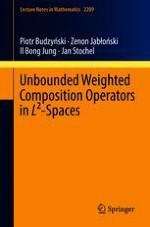This book establishes the foundations of the theory of bounded and unbounded weighted composition operators in L²-spaces. It develops the theory in full generality, meaning that the corresponding composition operators are not assumed to be well defined. A variety of seminormality properties of unbounded weighted composition operators are characterized.
The first-ever criteria for subnormality of unbounded weighted composition operators are provided and the subtle interplay between the classical moment problem, graph theory and the injectivity problem for weighted composition operators is revealed. The relationships between weighted composition operators and the corresponding multiplication and composition operators are investigated. The optimality of the obtained results is illustrated by a variety of examples, including those of discrete and continuous types.
The book is primarily aimed at researchers in single or multivariable operator theory.
